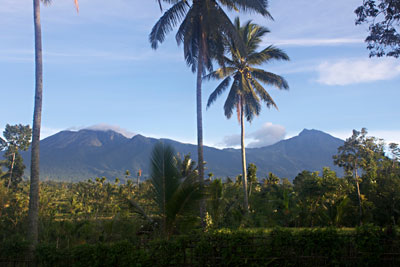 |
|
| A view of Rinjani, Lombok’s highest volcano, from the village below. | |
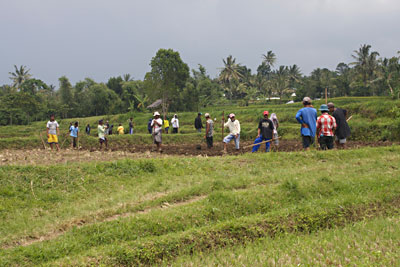 |
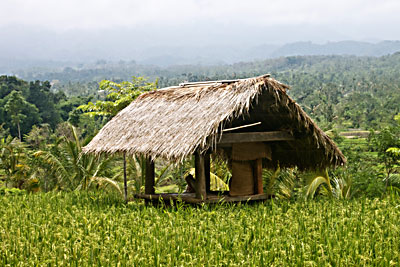 |
| Neighbors come together to help the first of the rice harvest. | A shaded platform at the edge of a rice paddy offers a midday escape from the Indonesian sun. |
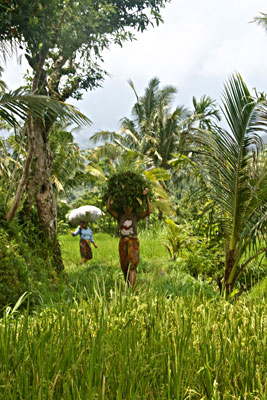 |
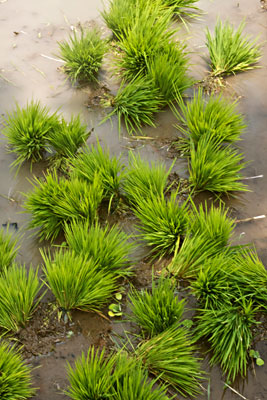 |
| Two farmers carry wild forage for their cows. | Rice seedlings bundled to be transplanted into the rice paddies. |
By Travis Roderick
On a recent surf trip to Indonesia, I stumbled upon a hidden village tucked away in the foothills of Rinjani, Indonesia’s second highest volcano. Tetebatu is a village where modern society has yet to completely swallow up age-old traditions and a simple way of life.
Peoples of Indonesian tribes settled the area due to its magnificent views, fertile volcanic soil and ample water. Rinjani, the Indonesian island of Lombok’s highest volcano, provides substantial year-round water runoff in the form of streams and rivers. The original farmers started cultivating rice more than a thousand years ago by turning the slopes of Rinjani into a Garden of Eden. They began carving elaborate, extensive irrigation systems down the mountainsides that would continue to be perfected for the next millennia. As well as hand digging the irrigation systems, they also terraced miles of the hillside to form beautiful rice paddies.
This largely agrarian community has relied on subsistence farming for centuries since then, producing rice, fruits and spices. Since the introduction of new world crops, the villagers also cultivate chilies and tomatoes. The pioneers’ foresight at ensuring generations of success from these systems is truly surreal. Each generation reaps the hard work of the last.
Little has changed in the way of farming here in the last thousand years. Being in the tropics and having the good fortune of plenty of water from the volcano, food is cultivated here year round. The villagers have adopted little in the way of new crops and machinery. The entire irrigation system is gravity-fed, so electricity isn’t needed. Many hand tools, such as the hoe, are still used to weed and hill crops. Cows help till the earth between plantings. Reusable bamboo fences support crops such as tomatoes.
Most of the crops grown are consumed by the hundreds of people living in the village, with surplus sold to nearby markets, to the rest of Indonesia and to a few neighboring countries.
It is fascinating to see people working communally here. The antiquated village is spread throughout the farmland, and it is hard to see where one dwelling ends and another begins. There is a greater sense of collectiveness here than almost anywhere else in the world. It is very common to see more than 20 men and women working the same plot of land. Everything in Tetebatu is shared. Upon asking a woman with a child if it were hers, she answered in broken English that she was just looking after it while her friend came back from the fields.
Tetebatu is a living model of sustainability in our age of industrial globalization. Working together toward one common goal proves that even mountains can be moved and transformed into viable villages where people can thrive under very simple ways. This collectivity makes Tetebatu special, as it could never have been possible otherwise. The developed modern world can learn much from a rustic village such as this one. Very little waste and pollution come from such a culture. Places like Tetebatu provide inspirational examples of living sustainably with our natural surroundings.
About the author: Travis Roderick owns Living Roots Farm in Milbridge, Maine.
